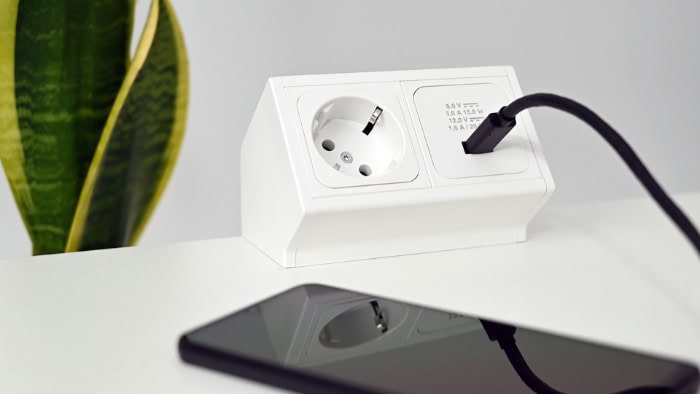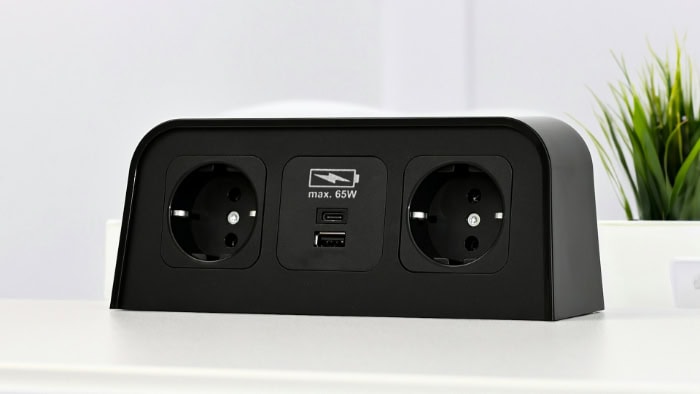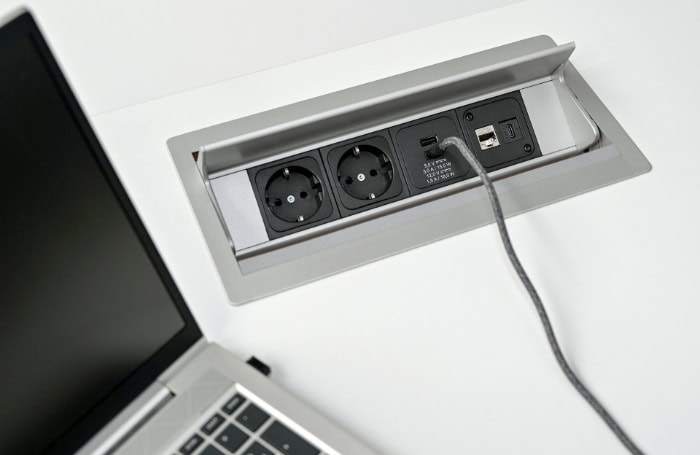Are Surge Protectors Necessary? Power Safety Explained

Have you ever plugged in your brand-new television or computer, only to worry about the risk of a power surge frying its delicate components? It's a fear that has driven many to reach for surge protectors as a first line of defense.
But are these devices really the heroes they're made out to be? Some swear by their protective powers, while others dismiss them as nothing more than glorified power strips.
Understanding Surge Protectors
Surge protectors are electrical devices designed to protect electronic equipment from voltage spikes or surges in the power supply. These sudden increases in voltage can damage or destroy sensitive electronic components, potentially leading to costly repairs or replacements.
Surge protectors act as a barrier, absorbing or diverting excess voltage away from connected devices.
Unlike simple power strips that merely provide additional outlets, surge protectors contain specialized circuitry that monitors incoming voltage and responds to abnormal increases. They're commonly used to protect computers, televisions, gaming consoles, and other valuable electronics that are susceptible to damage from electrical irregularities.
How Do Surge Protectors Work?
Surge protectors employ a combination of components to detect and divert excess voltage. The primary element in most surge protectors is the Metal Oxide Varistor (MOV).
This component acts like a pressure-sensitive valve for electricity. Under normal conditions, it allows current to flow through unimpeded.
However, when voltage exceeds a certain threshold, the MOV's resistance drops dramatically, creating a path of least resistance that diverts excess voltage to the ground wire.
Another crucial component is the gas discharge arrestor, which can handle larger surges than MOVs. These work by creating a short circuit when voltage exceeds safe levels, redirecting the surge away from connected devices.
Some advanced surge protectors also incorporate thermal fuses. These act as a failsafe, disconnecting power entirely if other protective components fail or overheat due to a sustained surge.
Types of Surge Protectors
Surge protectors come in various forms to suit different needs and applications:
- Power Strip Surge Protectors: These are the most common type, resembling a standard power strip but with added surge protection capabilities. They typically offer multiple outlets and are ideal for home entertainment systems or computer setups.
- Wall-Mount Surge Protectors: These plug directly into wall outlets and provide a compact solution for areas with limited space. They often feature a low profile design and may include USB charging ports.
- Whole-House Surge Protectors: Installed at the main electrical panel, these devices protect all circuits in a home or building. They're particularly effective against large external surges, such as those caused by lightning strikes.
- Uninterruptible Power Supplies (UPS): While primarily designed to provide backup power during outages, many UPS systems also incorporate surge protection features.
Difference Between Surge Protectors and Power Strips
While surge protectors and power strips may look similar, they serve distinct purposes. Power strips are essentially extension cords with multiple outlets, designed to expand the number of devices that can be plugged into a single wall socket.
They offer convenience but provide no protection against power surges or voltage spikes.
Surge protectors, on the other hand, incorporate protective circuitry to safeguard connected devices from electrical anomalies. They often include additional features such as:
- Joule ratings, indicating the amount of energy the surge protector can absorb
- Clamping voltage, which specifies the voltage level at which the protector activates
- Response time, measuring how quickly the protector reacts to a surge
While many surge protectors resemble power strips in appearance, offering multiple outlets, their internal components set them apart. Some models even include indicator lights to show whether the surge protection is active or if the device needs replacement.
It's important to note that not all devices marketed as “surge protectors” offer equal levels of protection. Consumers should carefully examine product specifications and certifications to ensure they're getting genuine surge protection capabilities.
The Importance of Surge Protection

From computers and smartphones to home appliances and entertainment systems, these devices are valuable investments that we rely on for work, communication, and leisure. However, the very power that keeps them running can also pose a significant threat.
Potential Risks to Electronics from Power Surges
Power surges, also known as transient voltage spikes, are sudden and brief increases in voltage that can exceed the normal operating voltage of electronic devices. These surges can range from a few volts to several thousand volts and can last from a few microseconds to several milliseconds.
When exposed to a power surge, electronic components can suffer damage in various ways. Excess voltage can cause immediate physical damage, such as blown fuses, melted wiring, or burnt circuit boards.
In some cases, the damage may not be immediately apparent, but the device's lifespan can be significantly shortened due to the stress placed on its components.
Repeated exposure to smaller surges can cause gradual deterioration, leading to decreased performance and eventual failure. This cumulative damage is often harder to diagnose and can be mistaken for normal wear and tear.
Common Causes of Power Surges
Power surges can originate from various sources, both internal and external to a building. Some common causes include:
- Lightning Strikes: While direct lightning strikes are relatively rare, they can cause massive power surges that can easily overwhelm standard surge protectors and cause extensive damage to connected devices.
- Electrical Grid Fluctuations: Issues with the external power grid, such as downed power lines, transformer malfunctions, or power company switching operations, can send voltage spikes through the lines and into homes and businesses.
- High-Powered Electrical Devices: Large appliances like air conditioners, refrigerators, and industrial equipment can create internal power surges when they cycle on and off. These surges can propagate through a building's electrical system and affect other devices.
- Faulty Wiring: Improper electrical wiring, loose connections, or damaged insulation can cause short circuits or sudden voltage changes that manifest as power surges.
- Utility Power Restoration: When power is restored after an outage, the sudden influx of electricity can cause a momentary surge as the grid stabilizes.
Financial Implications of Damaged Electronics
The cost of replacing or repairing devices damaged by power surges can be substantial. Consumer electronics, such as televisions, computers, and gaming consoles, can easily cost hundreds or even thousands of dollars to replace.
In a business setting, the financial impact can be even more severe, with potential losses including:
- Productivity downtime due to equipment failure
- Cost of repairs or replacements for specialized equipment
- Loss of critical data or unsaved work
- Damage to a company's reputation if services are disrupted
Role of Surge Protectors in Equipment Longevity
Surge protectors play a vital role in safeguarding electronic devices from the damaging effects of power surges. By diverting excess voltage away from connected equipment, surge protectors help extend the lifespan of devices and minimize the risk of catastrophic failure.
Investing in quality surge protectors can provide peace of mind and potentially save significant amounts of money in the long run by preventing device damage and avoiding costly replacements. Surge protectors act as a first line of defense, absorbing the brunt of voltage spikes and ensuring a stable power supply for connected electronics.
However, it's important to recognize that surge protectors have limitations. They can handle most common surges, but extremely large spikes, like those caused by a direct lightning strike, may still cause damage.
Regular maintenance, such as replacing surge protectors after a major event or after the recommended lifespan, is crucial to ensure ongoing protection.
Benefits of Using Surge Protectors

Surge protectors offer a range of advantages that extend beyond their primary function of safeguarding electronics from power surges. From protecting valuable devices to enhancing energy efficiency and providing convenience, surge protectors have become an essential component of modern electrical systems.
Protection for Valuable Electronics
The most obvious and significant benefit of using surge protectors is the protection they offer to valuable electronic devices. In today's digital age, our homes and offices are filled with expensive and sensitive equipment that can be easily damaged by power fluctuations.
Computers, televisions, gaming consoles, audio systems, and smart home devices all represent substantial investments that deserve protection.
Surge protectors act as a barrier between these devices and potentially harmful power surges. They absorb or divert excess voltage, preventing it from reaching and damaging connected equipment.
This protection is particularly crucial for devices with sensitive microprocessors, such as computers and smartphones, which can be irreparably damaged by even minor power fluctuations.
Moreover, surge protectors help preserve the longevity of electronic devices. While a single large surge can cause immediate and catastrophic damage, repeated exposure to smaller surges can lead to gradual degradation of components.
By consistently filtering out these minor fluctuations, surge protectors help maintain the performance and extend the lifespan of connected devices.
Energy Efficiency Features
Many modern surge protectors come equipped with energy-saving features that can help reduce electricity consumption and lower utility bills. These features often include:
- Power Strips with On/Off Switches: Some surge protectors include switches that allow users to completely cut power to connected devices, eliminating standby power consumption.
- Smart Power Management: Advanced surge protectors can detect when devices are in standby mode and automatically cut power to those outlets, reducing phantom energy draw.
- Timed Shutoffs: Certain models offer programmable timers that can automatically turn off power to specific outlets at designated times, useful for devices that don't need to be powered 24/7.
- Energy Monitoring Displays: Some high-end surge protectors include displays that show real-time power consumption, helping users identify energy-hungry devices and make informed decisions about their usage.
By incorporating these energy-efficient features, surge protectors not only protect devices but also contribute to overall energy conservation efforts and can lead to noticeable savings on electricity bills over time.
Convenience of Multiple Outlets
Surge protectors typically offer multiple outlets, providing a convenient solution for areas with limited wall sockets. This feature is particularly beneficial in home offices, entertainment centers, or any space where numerous devices need to be powered simultaneously.
The ability to plug multiple devices into a single surge protector eliminates the need for numerous individual adapters or extension cords, reducing clutter and creating a more organized space.
Many surge protectors also come in various shapes and sizes, including wall-mounted options and models with widely spaced outlets to accommodate bulky adapters.
Additionally, some surge protectors include USB charging ports, allowing users to charge smartphones, tablets, and other USB-powered devices without occupying a standard outlet.
This added convenience can be especially useful in areas like bedside tables or workstations where multiple charging options are needed.
Limitations and Misconceptions

While surge protectors are valuable tools for safeguarding electronic devices, they are not infallible. It's crucial to understand their limitations and dispel common misconceptions to ensure proper usage and realistic expectations.
What Surge Protectors Can't Protect Against
Surge protectors are designed to handle specific types of electrical anomalies, but they have limitations. One of the most significant limitations is their inability to protect against direct lightning strikes.
The immense power of a lightning strike can overwhelm even the most robust surge protector, potentially causing damage to connected devices.
Additionally, surge protectors are not designed to protect against sustained overvoltage conditions. If the power supply consistently delivers voltage above the normal range, a surge protector may not be able to mitigate this ongoing issue effectively.
Such situations require voltage regulators or other specialized equipment.
Surge protectors also cannot prevent damage caused by physical factors such as water damage, fire, or mechanical shock. They are solely designed to address electrical issues and cannot protect against other forms of harm to electronic devices.
Furthermore, surge protectors are not a substitute for proper grounding in a building's electrical system. If the wiring in a home or office is faulty or improperly grounded, surge protectors may not function as intended, leaving devices vulnerable to electrical issues.
Lifespan and Degradation of Surge Protectors
Contrary to popular belief, surge protectors do not last indefinitely. The components within surge protectors, particularly the metal oxide varistors (MOVs), degrade over time and with each surge event they absorb.
This gradual wear reduces their effectiveness in protecting against future surges.
The lifespan of a surge protector depends on various factors, including the quality of its components, the frequency and intensity of power surges it encounters, and environmental conditions such as temperature and humidity. Generally, manufacturers recommend replacing surge protectors every 3-5 years, but this can vary based on usage and exposure to surges.
Some high-quality surge protectors include indicator lights that show when the device is no longer providing protection. However, not all models have this feature, and the absence of visible damage doesn't necessarily mean the surge protector is still functioning optimally.
It's important to note that a surge protector that has absorbed a significant surge may have sacrificed its protective capabilities to save the connected devices. In such cases, the surge protector should be replaced immediately, even if it appears to be functioning normally.
Misconceptions About Surge Protector Capabilities
Several misconceptions exist regarding the capabilities of surge protectors. One common misunderstanding is that all power strips provide surge protection.
In reality, many power strips are simply multi-outlet extensions and offer no protection against power surges.
Another misconception is that surge protectors can prevent data loss during power outages. While surge protectors can safeguard against voltage spikes, they cannot provide backup power during an outage.
For protection against data loss due to power failures, an uninterruptible power supply (UPS) is necessary.
Some people believe that higher joule ratings always indicate better protection. While joule ratings are important, they are not the only factor determining a surge protector's effectiveness.
Response time, clamping voltage, and the overall quality of components are equally crucial.
There's also a misconception that surge protectors can fix existing problems with electronic devices. Surge protectors are preventive tools and cannot repair damage that has already occurred due to previous power surges or other issues.
Situations Where Surge Protectors May Be Ineffective
Certain scenarios can render surge protectors less effective or even completely ineffective. In areas prone to frequent and severe lightning storms, standard surge protectors may not provide adequate protection. In such cases, more comprehensive solutions like whole-house surge protection systems might be necessary.
Surge protectors may also be ineffective in buildings with outdated or faulty wiring. If the electrical system doesn't meet current safety standards or lacks proper grounding, surge protectors may not function as intended.
In industrial settings with heavy machinery or in locations with unstable power grids, the level of protection offered by consumer-grade surge protectors might be insufficient. These environments often require more robust, specialized surge protection solutions.
Lastly, surge protectors can become ineffective if they're overloaded. Connecting too many high-power devices to a single surge protector can exceed its capacity, potentially leading to overheating or failure of the protective components.
Alternatives to Standard Surge Protectors

While standard surge protectors are the most common solution for protecting electronic devices from power surges, they are not the only option available. In certain situations, alternative surge protection methods may be more appropriate or provide a higher level of protection.
Whole-House Surge Protection
Whole-house surge protection is a comprehensive solution that safeguards an entire building's electrical system from power surges. Unlike standard surge protectors that protect individual devices or outlets, whole-house surge protectors are installed at the main electrical panel, providing protection for all connected circuits and devices.
This type of surge protection is particularly beneficial in areas prone to frequent lightning strikes or with unstable power grids. By intercepting surges at the point of entry, whole-house surge protectors can prevent damage to a building's wiring and all connected appliances and electronics.
Whole-house surge protection systems typically consist of two components: a primary surge protector installed at the main electrical panel and secondary surge protectors installed at strategic points throughout the building, such as near sensitive electronic equipment.
While whole-house surge protection offers a higher level of protection, it requires professional installation by a licensed electrician and can be more expensive than standard surge protectors. However, for those seeking comprehensive protection for their entire home or office, this investment can provide valuable peace of mind.
Uninterruptible Power Supplies (UPS)
Uninterruptible power supplies, or UPS systems, are designed to provide backup power to connected devices during power outages.
However, many UPS systems also incorporate surge protection features, making them a versatile alternative to standard surge protectors.
A UPS system consists of a battery backup unit that can supply power to connected devices for a limited time during a power failure. This allows users to save their work, safely shut down equipment, or continue working until the main power is restored.
In addition to backup power, UPS systems often include built-in surge protection circuitry. This feature helps safeguard connected devices from power surges and spikes, providing an extra layer of protection.
UPS systems come in various sizes and capacities, ranging from small units designed for individual computers to larger systems capable of supporting multiple devices or entire server rooms.
When selecting a UPS, it's important to consider factors such as the power requirements of the connected devices, the desired runtime during a power outage, and the level of surge protection needed.
Built-In Surge Protection in Modern Devices
Many modern electronic devices, such as computers, televisions, and appliances, now come with built-in surge protection features. These integrated surge protectors are designed to safeguard the device's internal components from power surges without the need for an external surge protector.
Built-in surge protection can be a convenient solution, as it eliminates the need for additional devices and ensures that the protection is always in place.
However, it's important to note that the level of protection offered by built-in surge protectors can vary significantly between devices and manufacturers.
While built-in surge protection can provide a basic level of defense, it may not be as comprehensive as dedicated surge protection solutions. In some cases, it may still be beneficial to use an external surge protector in conjunction with the built-in protection, especially for valuable or sensitive equipment.
When relying on built-in surge protection, it's crucial to review the device's specifications and documentation to understand the level of protection provided and any limitations or warranties associated with the feature.
Conclusion
Surge protectors are essential tools for safeguarding electronic devices in homes and offices. They offer protection against power surges, extend the lifespan of connected equipment, and provide convenience with multiple outlets.
However, it's important to recognize their limitations and consider alternative solutions like whole-house surge protection or uninterruptible power supplies for specific needs. By selecting the appropriate surge protection measures and maintaining them properly, individuals can minimize the risk of electrical damage and ensure the reliability of their valuable electronics.
Investing in surge protection is a smart choice for anyone looking to protect their devices and avoid costly repairs or replacements in the long run.


